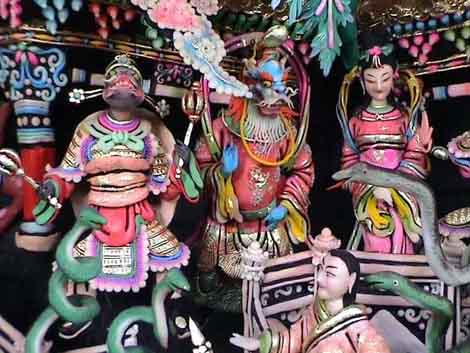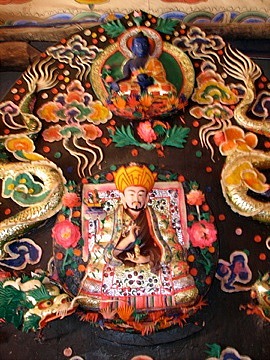All the butter sculptures or butter, are essential for the spiritual development of Tibetan Buddhism. As a unique sculptural art in Tibetan culture, the art has an origin in the Bon Tibetan religion and is considered one of the exotic flowers in the treasury of Tibetan art.
Origin of butter sculptures
In 641, when Princess Wencheng of the Tang Dynasty married the then Tibetan King Songtsan Gambo, she gave along a sculpture of Sakyamuni, which was later enshrined and worshiped at the Jokhang Temple.
To show their respect, the Tibetan people presented offerings in front of the Buddha. In accordance with traditional customs observed in India, offerings to Buddha and bodhisattvas were divided into six categories: the flower, Your incense, divine water, Incense, fruit, and the Buddha's light.
At that time, however, all the flowers and trees have died, so the Tibetan people made a bouquet of butter flowers instead.
Butter sculptures are a type of handmade molding butter where the main raw material is butter, cream a food among Tibetans in China. The solid material, which is soft and pure, with a faint smell, can be molded into vivid, bright and exquisite craftsmanship.
In the beginning, butter sculptures were simple and the techniques were difficult. Later, two institutions were created at the Taer Monastery to train monk artists specializing in this art. With a passion for the Buddha and the arts, the monks worked hard and learned from each other to overcome their own weaknesses, thus enriching the art in terms of structure and content.
The manufacture of butter sculptures is quite unique and complex: Since butter melts easily it is modeled by hand in cold conditions (usually on winter days) by monk artists.
To make the butter softer and more delicate, it is soaked in cold water for a long time to remove impure substances, then the butter is kneaded into an ointment. Before the sculpture, the artists must wash themselves and take part in a religious ritual.
So, they begin to discuss the butter sculpture issue. After establishing the theme, they elaborate on the concept, planning, and design of the butter sculpture. During this process, the work is distributed among the monks respectively. When all the preparatory work has been completed, the artists enter the rooms at a temperature of 0 ℃ and begin their sculptures.

